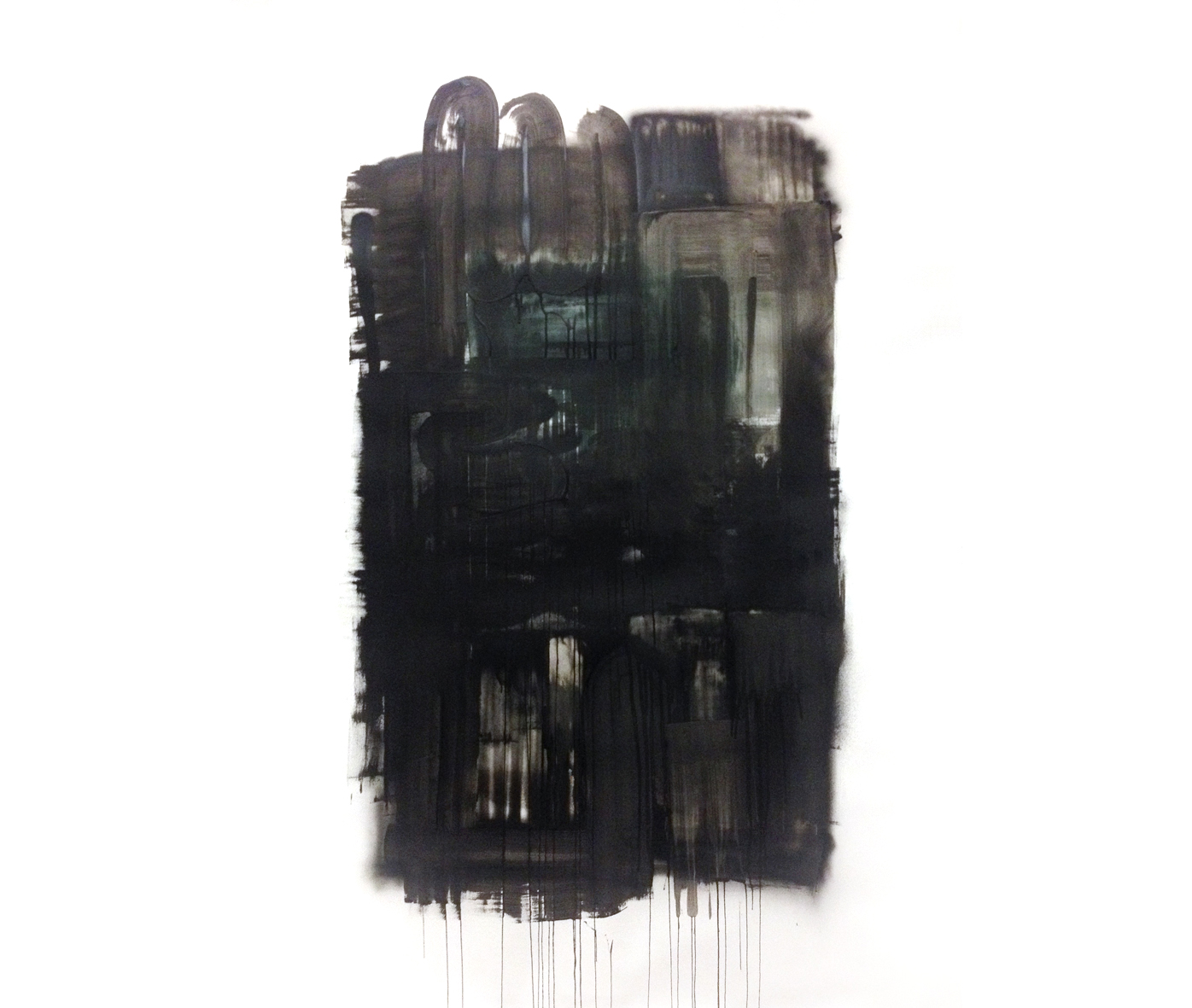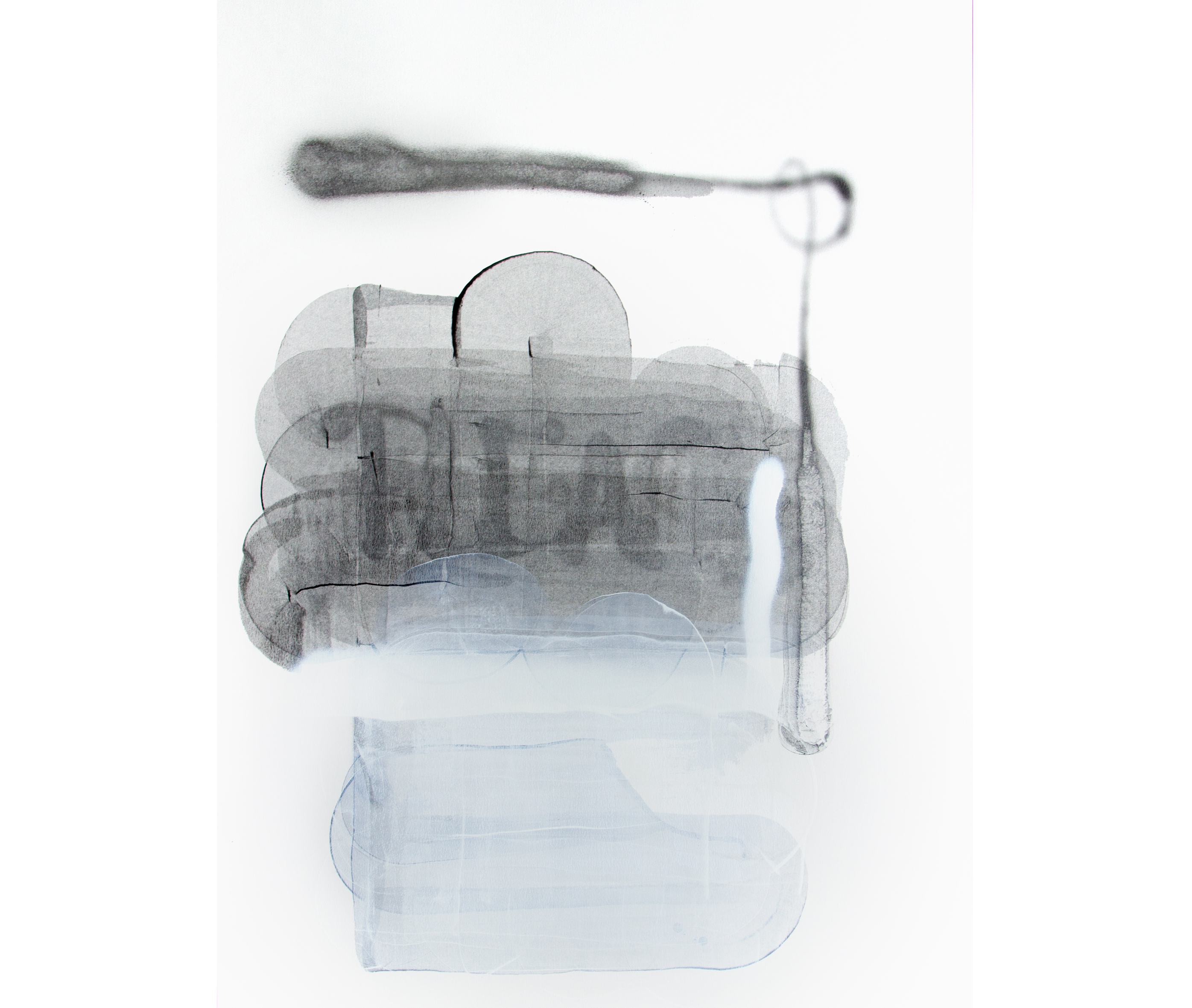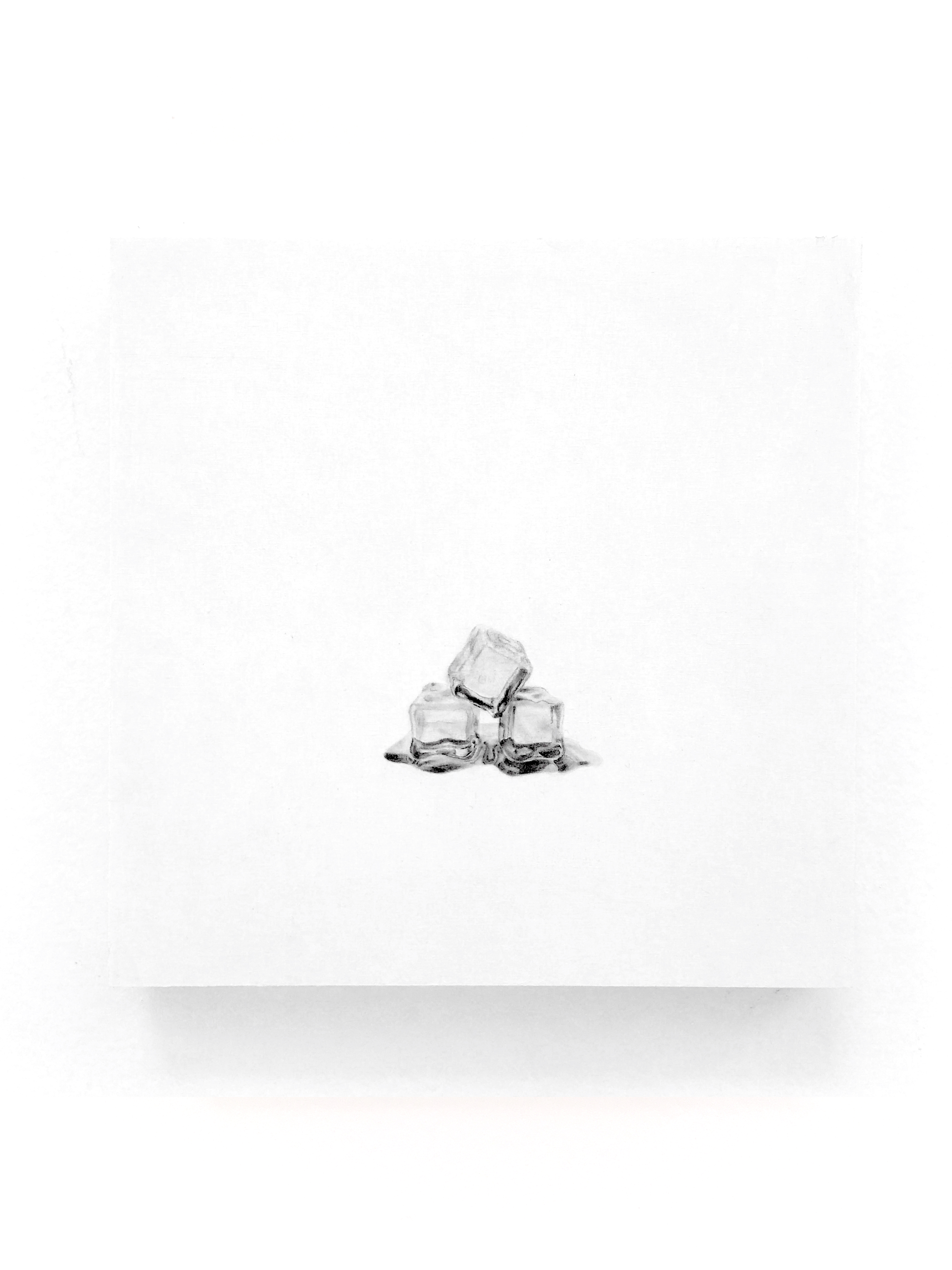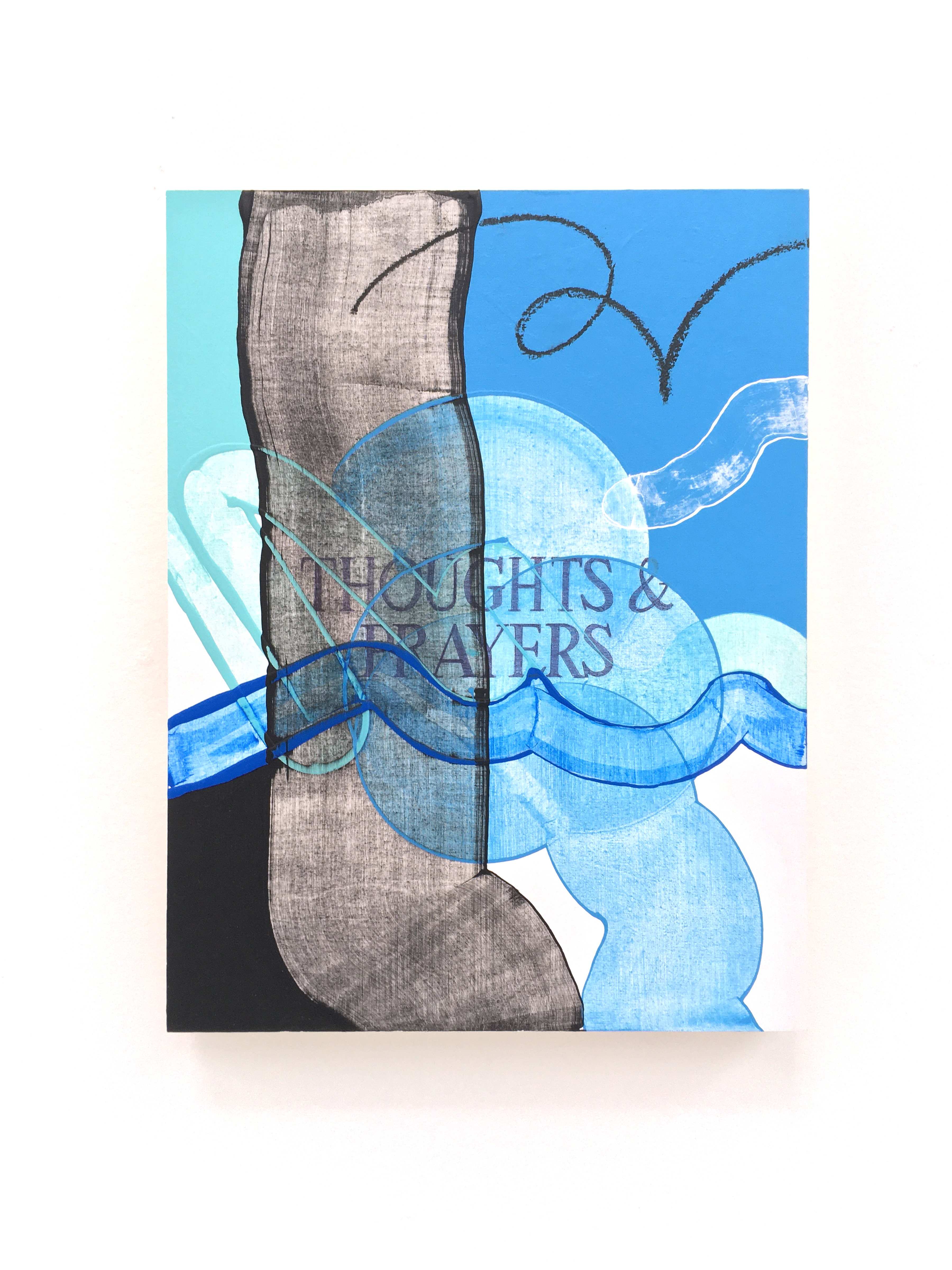Erasure, politics, & language
“The lack of, and some alchemy”
Enamel on paper
51 x 60”
2015
“The lack of, and some Grey”
Enamel on paper
51 x 72”
2015
The act of erasure and exposure plays a crucial role in graffiti culture. I employ a technique called buffing in my work, which involves painting over an existing work and then “cleaning” it with solvents. This usually results in a residue of the original marking or a new rectangular shape. I take this idea and apply it through my own lens. Michael Taussig suggests that “destruction may be our last remaining window to the sacred.” In my practice, this is true. The application of paint is just as important as its removal. The defacement of property and art creates a new dialogue. In my paintings of deities and monograms, I create something sacred which is then defaced with graffiti remover. Through these actions, I am sacrificing the beautiful for the grotesque. I'm masking the identity in the application of the medium by removing the paint and reshaping it. The clash between paint and graffiti remover gives a concept of both creation and destruction. This process hints at the idea of colonialism. The reshaping of the paint is symbolic of the way the colonial powers have reshaped the native cultures. I'm creating a balance between the two, a juxtaposition of the sacred and the profane. By doing this, I'm creating a dialogue between the two forces and exploring the idea of how the two can coexist. The act of erasure and exposure is a powerful tool that allows me to explore the idea of identity, colonialism, and the clash of cultures.
“I can’t see what you’re saying”
Enamel on paper
22 x 30”
2015
“Please speak clearly”
Enamel on paper
22 x 30”
2016
The piece "Please speak clearly" is an exploration of communication through abstraction. By partially erasing words, I metaphorically represent the muting of voices from the past, which stands in for colonization and its attempts to silence the narratives of oppressed cultures. Through this process, something new is created that is a hybrid of both cultures. It is my hope that by reflecting the complexity of cultural dialogue, I can open up a space for further exploration and understanding. This dialogue is a way of recognizing and validating the experiences of those who have been silenced, while simultaneously creating an opportunity for growth and shared understanding.
The next series of works continued to explore the manipulation of paint as it was moved across the canvas, building on the concept of erasure, and connecting it to memes depicting the bodies of BIPOC in relation to the government. The political state of the nation heavily influenced this body of work, as the rise in cases of police brutality and the steady climb of the far Right into a more mainstream eye fueled the ideas behind the paintings and multimedia works. The aim was to find a way to present charged political concepts through a pacifing lens, inviting the viewer into the works through beauty in order to gain their attention to the deeper meanings behind the pieces. Through the use of vibrant colors, organic shapes, and organic lines, I sought to create a dialogue between the artwork and the viewer, sparking conversations about the often-ignored trauma and violence experienced by BIPOC in the United States. The flesh tones used in the paintings are from commercial house paint labeled with racial and ethnic descriptors, while the orange and blue colors symbolize government entities.

“Mexican chocolate, orange camo, cyan (primary) I”
Giclee print, acrylic, nylon, fabric, plastic, pin, on canvas
30 x 40”
2017
Similarly in the piece " mexican chocolate", I explore the complex relationship between identity and power by utilizing ethnically labeled paint colors such as Mexican chocolate as a metaphor and primary colors to represent law enforcement. Additionally, I incorporate a camouflage band to reference pop culture/high fashion, as well as Four Loko, convenience stores, and hunting. The primary blue is a reference to law enforcement. The pin is a representation of a spinning wheel, a metaphor for the overload of information and emotional distress being experienced by the community.. In this way, my artwork serves to draw attention to the tragic events that occurred in the Texaco Station parking lot, where Nicolas Sanchez, 39, was shot and killed by two officers on February 21st, 2017.

“Ebony King”
Acrylic, enamel, plastic chain, sticker, on canvas
30 x 40”
2018

“Ebony King” (side detail)
Acrylic, enamel, plastic chain, sticker, on canvas
30 x 40”
2018

“Not Safe For Work”
Acrylic, enamel, foam, sticker, on canvas
24x 30”
2018
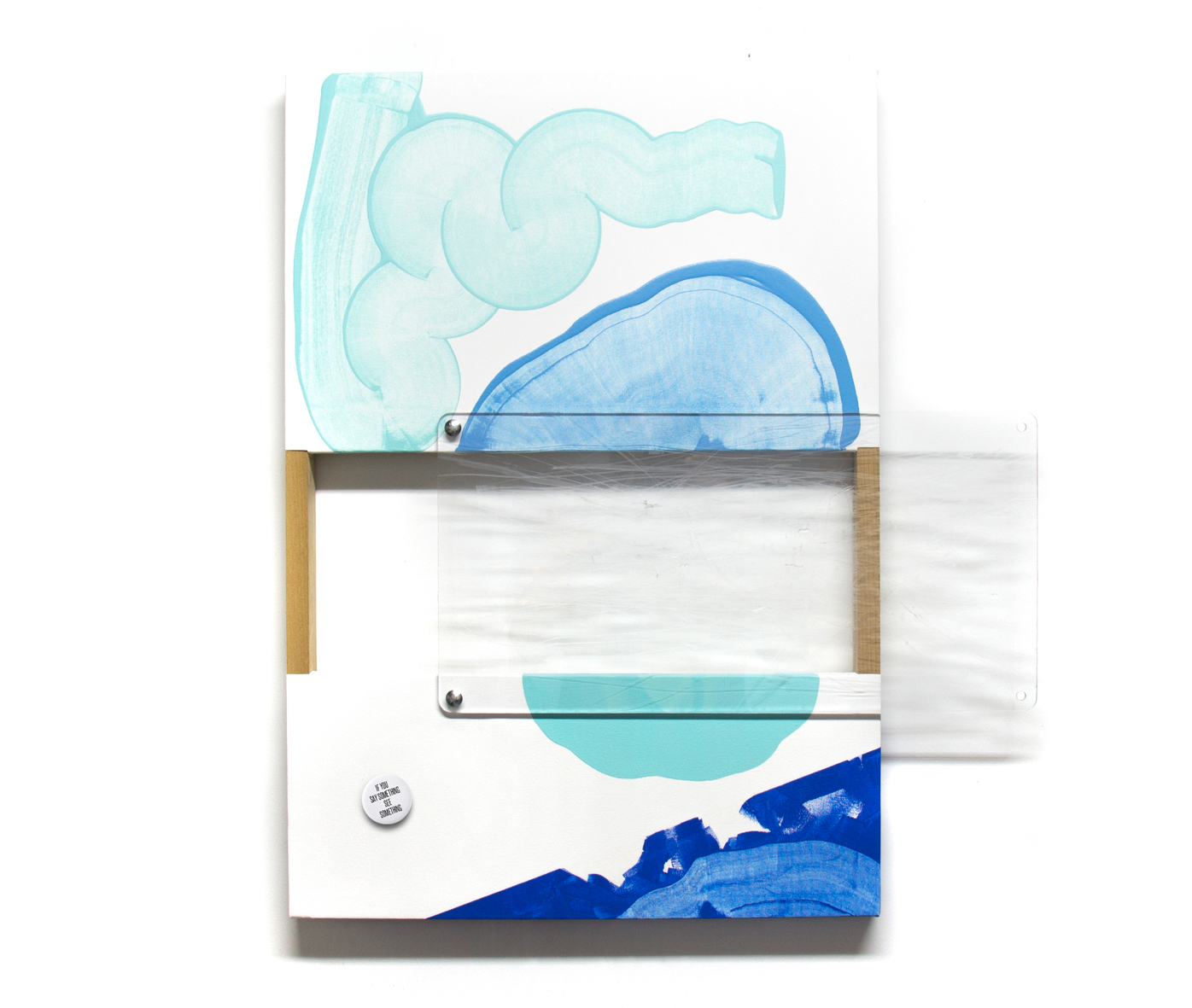
“Aqua, Cyan, Aqua, Blue”
Acrylic, pin, polycarbonate, bolts, on canvas
28.5 x 25”
2018

“White, black, and blue”
Acrylic, enamel, oil pastel on paper
15 x 22”
2018
“Light ice”
Charcoal on wood panel
12 x 12”
2019
“$13.13”
Acrylic, oil pastel on wood panel
12 x 16”
2019

“Mexicana, negro, navajo, I chocolate con azul”
Acrylic, and oil pastel on canvas
36 x 60”
2020
 “The lack of, and some alchemy”
“The lack of, and some alchemy”